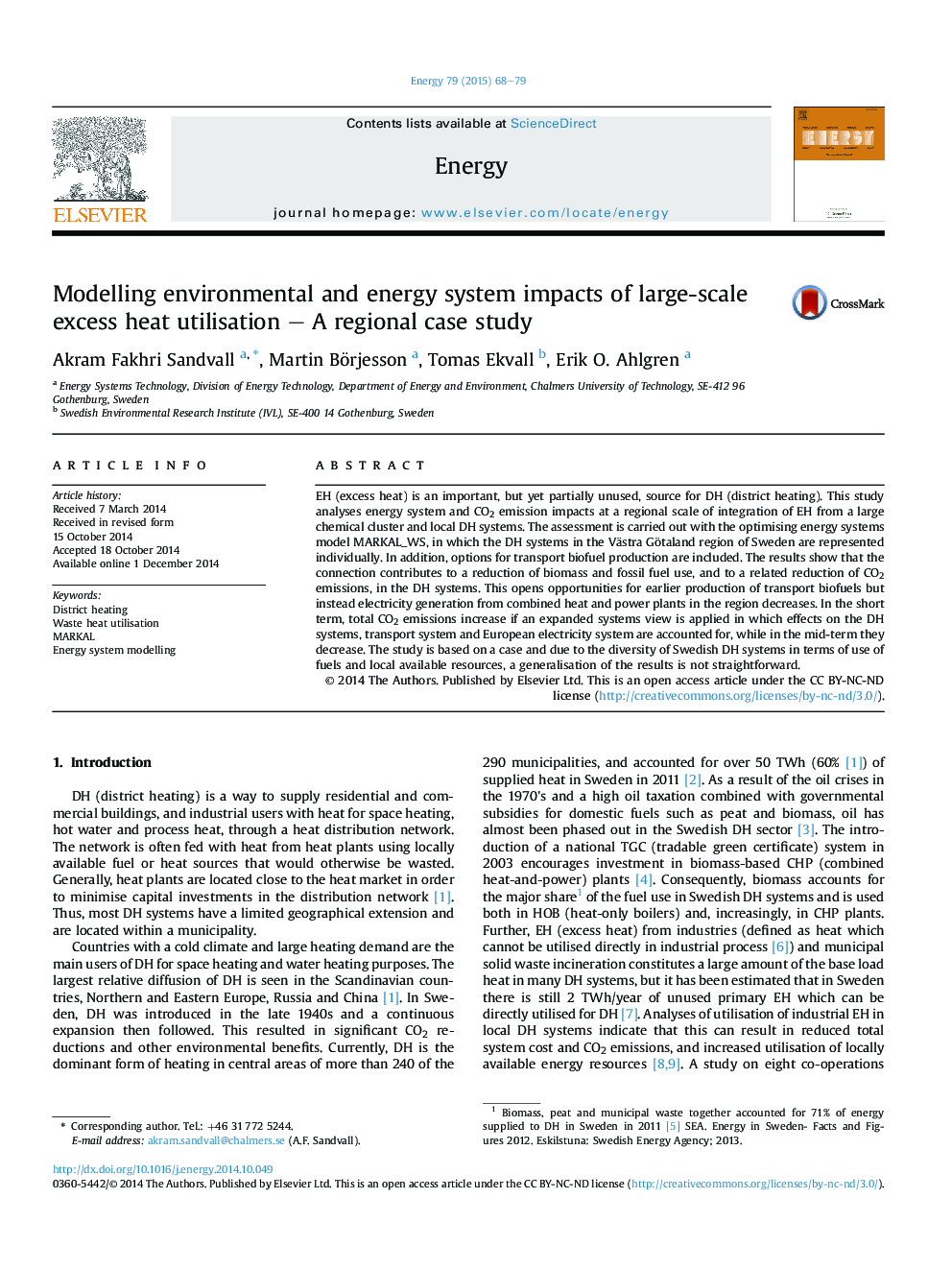| Article ID | Journal | Published Year | Pages | File Type |
|---|---|---|---|---|
| 8075770 | Energy | 2015 | 12 Pages |
Abstract
EH (excess heat) is an important, but yet partially unused, source for DH (district heating). This study analyses energy system and CO2 emission impacts at a regional scale of integration of EH from a large chemical cluster and local DH systems. The assessment is carried out with the optimising energy systems model MARKAL_WS, in which the DH systems in the Västra Götaland region of Sweden are represented individually. In addition, options for transport biofuel production are included. The results show that the connection contributes to a reduction of biomass and fossil fuel use, and to a related reduction of CO2 emissions, in the DH systems. This opens opportunities for earlier production of transport biofuels but instead electricity generation from combined heat and power plants in the region decreases. In the short term, total CO2 emissions increase if an expanded systems view is applied in which effects on the DH systems, transport system and European electricity system are accounted for, while in the mid-term they decrease. The study is based on a case and due to the diversity of Swedish DH systems in terms of use of fuels and local available resources, a generalisation of the results is not straightforward.
Related Topics
Physical Sciences and Engineering
Energy
Energy (General)
Authors
Akram Fakhri Sandvall, Martin Börjesson, Tomas Ekvall, Erik O. Ahlgren,
